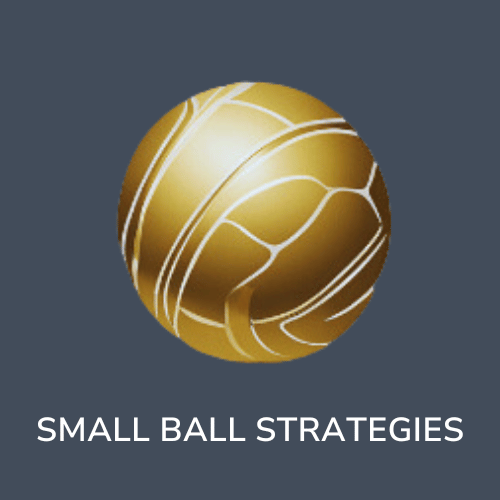Tariff changes are yet another wild card in the increasingly stacked deck of 2025. Understanding how they could affect your development program, capital raises, and commercialization is necessary for informed planning but many don't realize that trade wars will also hold risks and opportunities on the early exit via M&A front.
I put together a deck to illustrate how US medtech startups looking to exit might be impacted as well as a similar deck for Canadian medical device startups. The outlook and mitigation strategies look different for each due to differences in political, economic, and market factors. The upshot is that there are opportunities and risks no matter which side of the border you call home, but Canadians will face the biggest threats due to the aforementioned factors.
I've embedded the decks here but have also supplied a narrative summary below.
How Tariff Changes Could Influence Advisability and Outcome of Early Exit via M&A Initiatives for US Medtech Startups
Impact on Early Exit Decisions
- Increased Costs Could Accelerate Exit Timing
Startups facing rising costs due to tariffs on imported materials and components might have reduced runway and need to seek an exit sooner. This urgency could stem from: - Pressure to secure liquidity before additional costs erode margins.
- The inability to raise follow-on funding due to investor concerns about long-term profitability under higher cost structures.
- Valuation Considerations
- Downward Pressure: Increased costs and supply chain uncertainties may negatively affect financial projections, leading to reduced valuations.
- Opportunistic Buyers: Larger medtech companies with more robust supply chains may view startups as attractive acquisition targets, albeit at a discounted price.
- Localized Manufacturing as a Selling Point
Startups that have already adopted domestic manufacturing or localized supply chains might appeal to buyers as more resilient in the face of tariff-related risks. - Regulatory Environment as a Wild Card
If deregulation improves the time-to-market for medtech devices, startups might have stronger value propositions. Buyers may be willing to pay a premium for startups positioned to quickly capitalize on streamlined FDA processes.
Impact on Exit Outcomes
Buyer Pool Dynamics
Strategic buyers (e.g., large medtech firms) might see acquisitions as an opportunity to integrate innovative technologies while mitigating tariff-related risks through scale.
Financial buyers (e.g., private equity firms) may approach deals more cautiously, requiring deeper due diligence on supply chain risks and cost structures.
Deal Structuring Adjustments
Earnouts or milestone-based payments might become more common as buyers seek to hedge risks related to regulatory or tariff-induced uncertainties.
Stock-based deals might become less attractive if buyers’ valuations are impacted by tariffs.
Exit Readiness and Storytelling
Startups must emphasize their adaptability to tariffs and regulatory changes. Key strategies include:
Highlighting a strong domestic supply chain or plans for localization.
Showcasing strategies to mitigate tariff-related risks, such as alternative sourcing or operational efficiencies.
Global Market Access
Retaliatory tariffs from other countries could limit international growth opportunities, which may deter global buyers or decrease perceived market potential. Startups reliant on exports might face discounted valuations.
Strategic Considerations for Medtech Founders
- Timing: If tariffs are expected to escalate further, exiting sooner rather than later could preempt valuation erosion. Conversely, waiting for potential deregulation benefits might enhance value.
- Targeting Buyers: Focus on strategic acquirers with established supply chains and capabilities to absorb tariff-related impacts.
- Positioning for Resilience: Clearly demonstrate adaptability to economic shifts, such as having a diversified supplier base or plans to leverage domestic manufacturing incentives.
- Negotiation Leverage: Use tariff-driven industry challenges to emphasize the value of your startup’s innovations, which may offer buyers a competitive edge.
Conclusion
While tariff changes introduce challenges, they also present strategic opportunities to position the startup as an attractive acquisition target. By addressing risks proactively, medtech startups can optimize outcomes and make a strong case for an early exit despite—or even because of—the shifting economic landscape.
How Tariff Changes Could Influence Advisability and Outcome of Early Exit via M&A Initiatives for Canadian Medtech Startups
For Canadian medtech startups, the implications of proposed U.S. tariff changes differ due to their position in cross-border trade and access to other markets. Here's how these dynamics influence the advisability and outcomes of pursuing an early exit:
Impact on Early Exit Decisions
- Cross-Border Trade Challenges
U.S. tariffs on Canadian imports (e.g., components, finished devices) could hinder access to the U.S., a primary market for many Canadian medtech companies. This may: - Accelerate the need to exit before trade barriers further erode profitability.
- Complicate the startup's attractiveness to U.S.-based buyers who rely on a seamless supply chain.
- Valuation Impacts
- Downward Pressure: Higher costs due to tariffs on Canadian-made devices entering the U.S. could lead to reduced valuations, particularly for companies with significant U.S. sales.
- Premium for Export Resilience: Startups with diversified market access, such as established distribution channels in Europe or Asia, might retain higher valuations despite U.S. tariffs.
- Alternative Market Opportunities
Tariffs could push startups to prioritize growth in non-U.S. markets before exiting. This diversification could enhance their value to global buyers seeking less U.S.-centric revenue streams.
Impact on Exit Outcomes
- Buyer Pool Adjustments
- Strategic Buyers: U.S. companies may view acquisitions of Canadian startups as a way to secure innovation while keeping production and exports localized.
- Global Buyers: European or Asian acquirers might view Canadian startups as entry points into North American markets, though they may demand risk-sharing mechanisms due to tariff uncertainty.
- Deal Structuring
- Dual-Phase Acquisitions: Buyers might require startups to achieve certain milestones (e.g., market expansion outside the U.S.) before full payment, making earnouts or deferred payments more common.
- Currency Considerations: Fluctuations in the Canadian dollar relative to the U.S. dollar could influence deal terms, especially if tariffs affect revenue projections.
- Increased Due Diligence on U.S. Access
Buyers will scrutinize the startup's reliance on U.S. markets. A heavy dependence on the U.S. could be seen as a risk unless mitigation strategies (e.g., U.S.-based subsidiaries or partnerships) are in place.
Strategic Considerations for Canadian Founders
- Timing the Exit
- Exiting sooner could preempt further tariff-related complications and capitalize on buyer interest before cross-border trade challenges intensify.
- Delaying might allow time to strengthen non-U.S. revenue streams, making the startup more attractive to global buyers.
- Positioning for Resilience
- Emphasize alternative revenue sources, such as the EU or Asian markets, which are unaffected by U.S. tariffs.
- Showcase any plans or progress in establishing U.S.-based production or partnerships to circumvent tariffs.
- Regulatory and Trade Agreements
- Highlight alignment with agreements like CETA (Comprehensive Economic and Trade Agreement) for EU access or CPTPP (Comprehensive and Progressive Agreement for Trans-Pacific Partnership) for Asia-Pacific markets.
- Leverage Canada’s relatively stable regulatory environment as a selling point compared to the U.S.
- Targeting Buyers
- Focus on acquirers with strong international operations or those seeking a foothold in Canada and non-U.S. markets.
- U.S. buyers may be particularly interested if the startup has plans to localize operations within the U.S. to sidestep tariffs.
Conclusion
For Canadian medtech startups, the U.S. tariff landscape presents challenges in accessing their largest market but also opportunities to diversify and position themselves as resilient global players. By addressing trade risks, leveraging alternative markets, and aligning with strategic buyers, startups can still achieve favorable exit outcomes, even in a complex trade environment.


